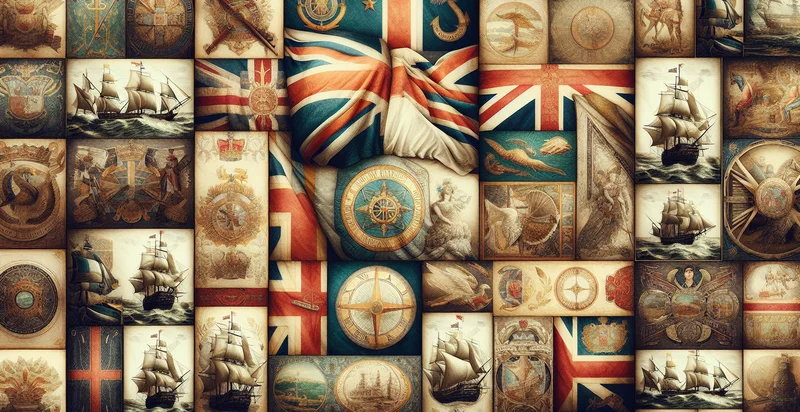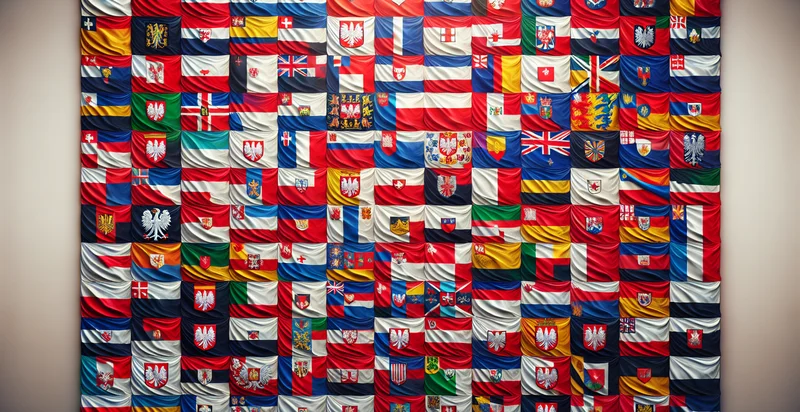Identify colonial flags
using AI
Below is a free classifier to identify colonial flags. Just upload your image, and our AI will predict which colonial flag it resembles. - in just seconds.

Contact us for API access
Or, use Nyckel to build highly-accurate custom classifiers in just minutes. No PhD required.
Get started
import nyckel
credentials = nyckel.Credentials("YOUR_CLIENT_ID", "YOUR_CLIENT_SECRET")
nyckel.invoke("colonial-flags-identifier", "your_image_url", credentials)
fetch('https://www.nyckel.com/v1/functions/colonial-flags-identifier/invoke', {
method: 'POST',
headers: {
'Authorization': 'Bearer ' + 'YOUR_BEARER_TOKEN',
'Content-Type': 'application/json',
},
body: JSON.stringify(
{"data": "your_image_url"}
)
})
.then(response => response.json())
.then(data => console.log(data));
curl -X POST \
-H "Content-Type: application/json" \
-H "Authorization: Bearer YOUR_BEARER_TOKEN" \
-d '{"data": "your_image_url"}' \
https://www.nyckel.com/v1/functions/colonial-flags-identifier/invoke
How this classifier works
To start, upload your image. Our AI tool will then predict which colonial flag it resembles..
This pretrained image model uses a Nyckel-created dataset and has 20 labels, including American Colonial, Austrian Colonial, Belgian Colonial, Brazilian Colonial, British Colonial, Dano-Icelandic Colonial, Dutch Colonial, French Colonial, German Colonial and Greek Colonial.
We'll also show a confidence score (the higher the number, the more confident the AI model is around which colonial flag it resembles.).
Whether you're just curious or building colonial flags detection into your application, we hope our classifier proves helpful.
Related Classifiers
Need to identify colonial flags at scale?
Get API or Zapier access to this classifier for free. It's perfect for:
- Historical Research Tool: The false image classification function can be utilized by historians and researchers to automatically identify and categorize colonial flags depicted in various historical documents and artifacts. This can streamline the research process and contribute to the preservation of historical knowledge.
- Educational Resource for Schools: Schools can implement this tool to provide interactive lessons related to colonialism, history, and geography by helping students recognize and understand the significance of different colonial flags. It can enhance student engagement by enabling visual learning through flag identification activities.
- Content Moderation for Social Media Platforms: Social media platforms can deploy this function to flag and remove offensive or misleading posts that misuse images of colonial flags for hate speech or misinformation campaigns. This enhances the platform's integrity and promotes a safe online community.
- Museum Exhibit Enhancement: Museums featuring exhibits related to colonial history can utilize the classification function to create dynamic displays that automatically identify and provide information on colonial flags. This can enhance the visitor experience by offering interactive multimedia content linked to the artifacts.
- Mobile Application for Travelers: A mobile app designed for travelers to colonial sites can incorporate this classification tool to help users identify and learn about colonial flags they encounter. This adds value to their experience by providing historical context and significance directly tied to the locations they are visiting.
- Cultural Sensitivity Training Programs: Organizations can use the classification function in training programs focused on cultural sensitivity to help participants understand the implications and historical context of colonial flags. This knowledge can foster respectful conversations and awareness around colonial legacy and representation.
- Flag Collection and Auction Platforms: Auction houses and collectors can implement the classification system to validate and categorize colonial flags in collections. This ensures accurate descriptions, enhances buyer confidence, and preserves the integrity of artifacts during sales and exhibitions.


